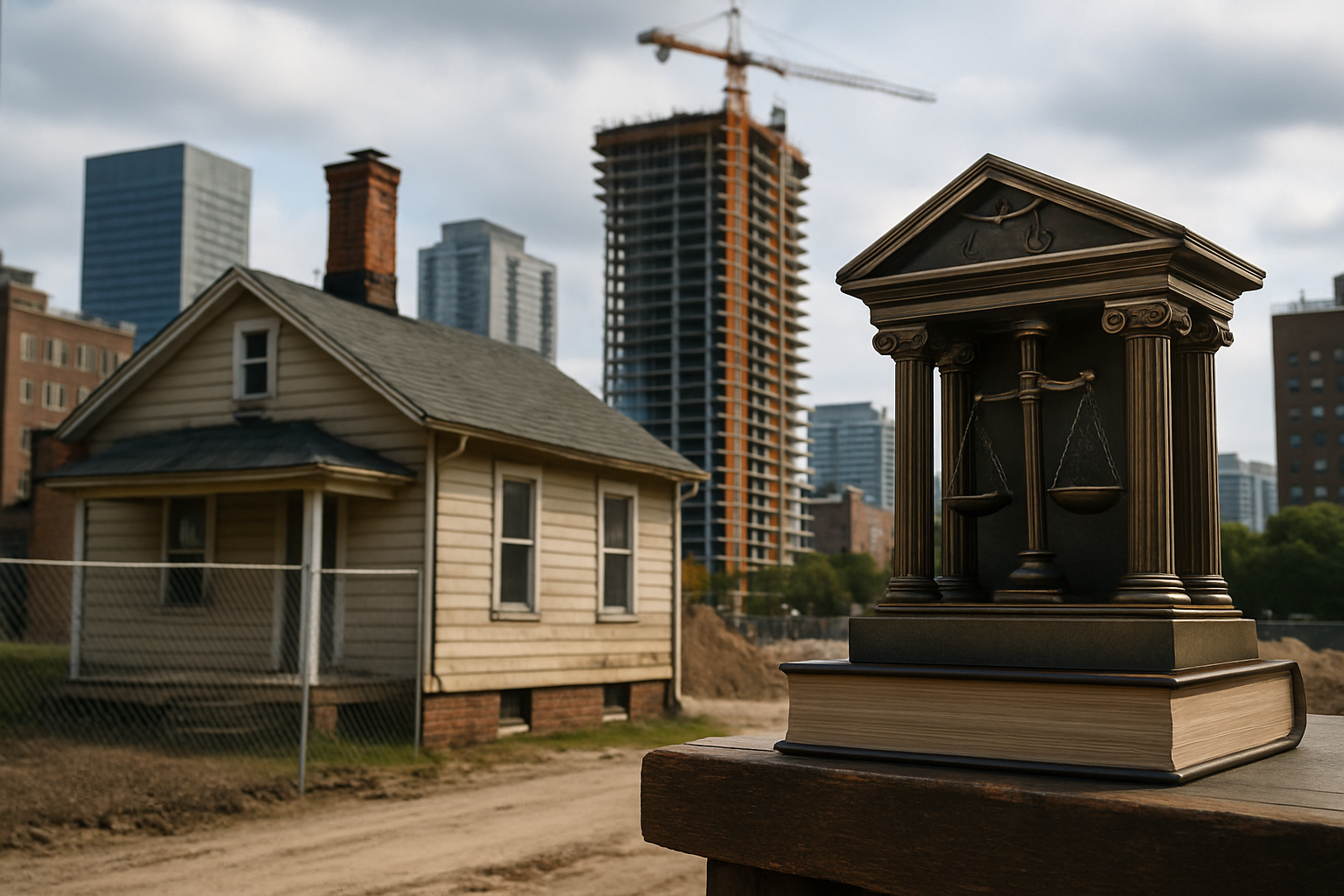Title: Eminent Domain and Urban Renewal: A Legal Tightrope
Introduction: In the complex intersection of property rights and public interest, eminent domain stands as a powerful yet controversial legal tool. This article delves into the intricate balance between urban development and individual property rights, exploring recent legal trends and their far-reaching implications for communities across the nation.

Urban Renewal and the Expansion of Public Use
The mid-20th century saw a dramatic shift in the interpretation of eminent domain, particularly with the advent of urban renewal programs. Cities began using this power to acquire and redevelop blighted areas, arguing that such projects served a public purpose by revitalizing struggling neighborhoods. This expansion of the public use doctrine culminated in the controversial 2005 Supreme Court case Kelo v. City of New London, which upheld the use of eminent domain for economic development purposes, even when the property would be transferred to private entities.
Recent Legal Challenges and Shifting Perspectives
In recent years, there has been a growing pushback against broad interpretations of eminent domain. Several state legislatures have enacted laws restricting its use, particularly in response to the Kelo decision. For instance, Florida amended its constitution to prohibit the use of eminent domain for private development, while Texas passed laws limiting its application to traditional public uses. These changes reflect a shifting legal landscape that seeks to balance urban development needs with stronger protections for property owners.
The Role of Just Compensation in Modern Eminent Domain Cases
While much of the debate surrounding eminent domain focuses on the definition of public use, the concept of just compensation has also evolved. Recent court decisions have grappled with determining fair market value in complex urban environments, particularly when property values are influenced by the very development projects driving the eminent domain action. Some jurisdictions have begun considering factors beyond mere market value, such as relocation costs and the sentimental value of long-held family properties, in an effort to provide more equitable compensation.
Community Impact and Social Justice Considerations
The use of eminent domain for urban renewal has increasingly come under scrutiny for its disproportionate impact on low-income and minority communities. Legal scholars and advocacy groups argue that these projects often lead to displacement and gentrification, raising important questions about social justice and equity in urban planning. Recent legal challenges have begun to incorporate these concerns, with some courts requiring more comprehensive community impact assessments before approving eminent domain actions.
The Future of Eminent Domain in Urban Development
As cities continue to grapple with challenges of growth, affordable housing, and economic revitalization, the role of eminent domain in urban development remains a contentious issue. Recent trends suggest a more nuanced approach, balancing the need for urban renewal with stronger protections for property owners and communities. Some innovative legal frameworks are emerging, such as community benefit agreements and land value capture mechanisms, which aim to ensure that the benefits of development are more equitably shared.
Conclusion
The evolving landscape of eminent domain law reflects the ongoing tension between public interest and private property rights in American jurisprudence. As urban areas continue to transform, legal professionals, policymakers, and community leaders must navigate this complex terrain with care. The future of eminent domain in urban renewal will likely involve more collaborative approaches, stricter scrutiny of public use claims, and a greater emphasis on equitable outcomes for all stakeholders involved.





